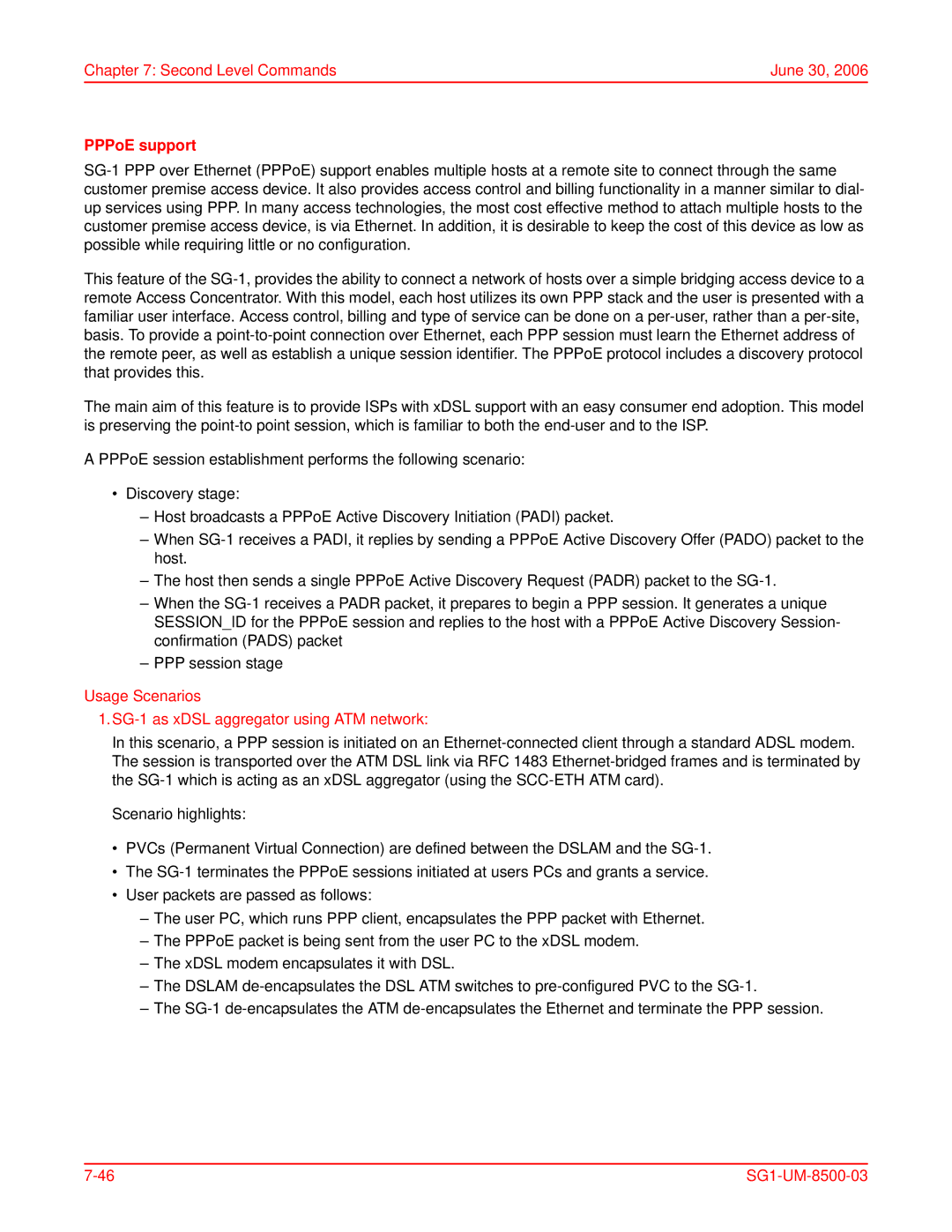Chapter 7: Second Level Commands | June 30, 2006 |
PPPoE support
This feature of the
The main aim of this feature is to provide ISPs with xDSL support with an easy consumer end adoption. This model is preserving the
A PPPoE session establishment performs the following scenario:
•Discovery stage:
–Host broadcasts a PPPoE Active Discovery Initiation (PADI) packet.
–When
–The host then sends a single PPPoE Active Discovery Request (PADR) packet to the
–When the
–PPP session stage
Usage Scenarios
1.SG-1 as xDSL aggregator using ATM network:
In this scenario, a PPP session is initiated on an
Scenario highlights:
•PVCs (Permanent Virtual Connection) are defined between the DSLAM and the
•The
•User packets are passed as follows:
–The user PC, which runs PPP client, encapsulates the PPP packet with Ethernet.
–The PPPoE packet is being sent from the user PC to the xDSL modem.
–The xDSL modem encapsulates it with DSL.
–The DSLAM
–The
|
